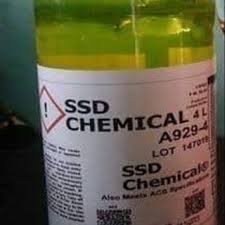Chemical Composition of Ssd Solution, SSD solution is a specialized chemical mixture commonly associated with cleaning and defacing chemicals, particularly in the context of laboratory research, industrial applications, and in some controversial cases, currency defacement studies. Its formulation is complex, containing multiple chemical agents that work together to achieve surface cleansing and preservation. Understanding the chemical composition of SSD solution provides insight into its mechanisms, effectiveness, and potential applications.
Key Components of SSD Solution
- Acidic Agents
- SSD solution often contains controlled amounts of inorganic or organic acids. These acids aid in breaking down surface oxidation and impurities, allowing other compounds in the mixture to penetrate effectively.
- Examples may include mild concentrations of hydrochloric or sulfuric derivatives, adjusted to prevent material damage.
- Buffering Compounds
- To balance the corrosive effect of acids, buffering agents are added. These compounds stabilize the solution’s pH, ensuring it remains effective without being overly destructive to surfaces.
- Catalytic Salts
- Metallic salts are included to accelerate chemical reactions on treated surfaces. They often act as oxidation-reduction catalysts, enhancing the solution’s cleaning or restoration abilities.
- Organic Solvents
- Organic solvents form a critical part of the composition. They dissolve stubborn residues, adhesives, or oily deposits. Solvents like acetone, ethanol, or proprietary blends may be used depending on the formulation.
- Stabilizers and Preservatives
- Since SSD solution is intended to be stored and used over time, stabilizing chemicals are added. These prevent premature reactions, evaporation, or crystallization of the active agents.
- Surfactants
- Surfactants reduce surface tension, allowing the solution to spread evenly and interact deeply with the treated material. This enhances its efficiency in cleaning or restoration processes.
Variations in Formulation
It is important to note that there is no single universal composition for SSD solution. Different manufacturers or laboratories may adjust the ratios or substitute certain chemicals depending on the intended application. Proprietary blends are often kept undisclosed, making precise chemical listings difficult to standardize.
Safety Considerations
Due to the mixture of strong acids, solvents, and catalysts, SSD solution must be handled with extreme caution. Direct exposure can cause skin irritation, respiratory harm, or surface damage if improperly applied. Protective gear such as gloves, goggles, and ventilation is essential when working with the solution.
Conclusion
The chemical composition of SSD solution is a carefully balanced combination of acids, solvents, salts, stabilizers, and surfactants. Its effectiveness lies in the synergy of these components, each playing a role in dissolving, cleansing, or preserving surfaces. While often surrounded by controversial uses, its chemistry demonstrates the sophistication of modern industrial cleaning agents.
You Might Also Like These:


